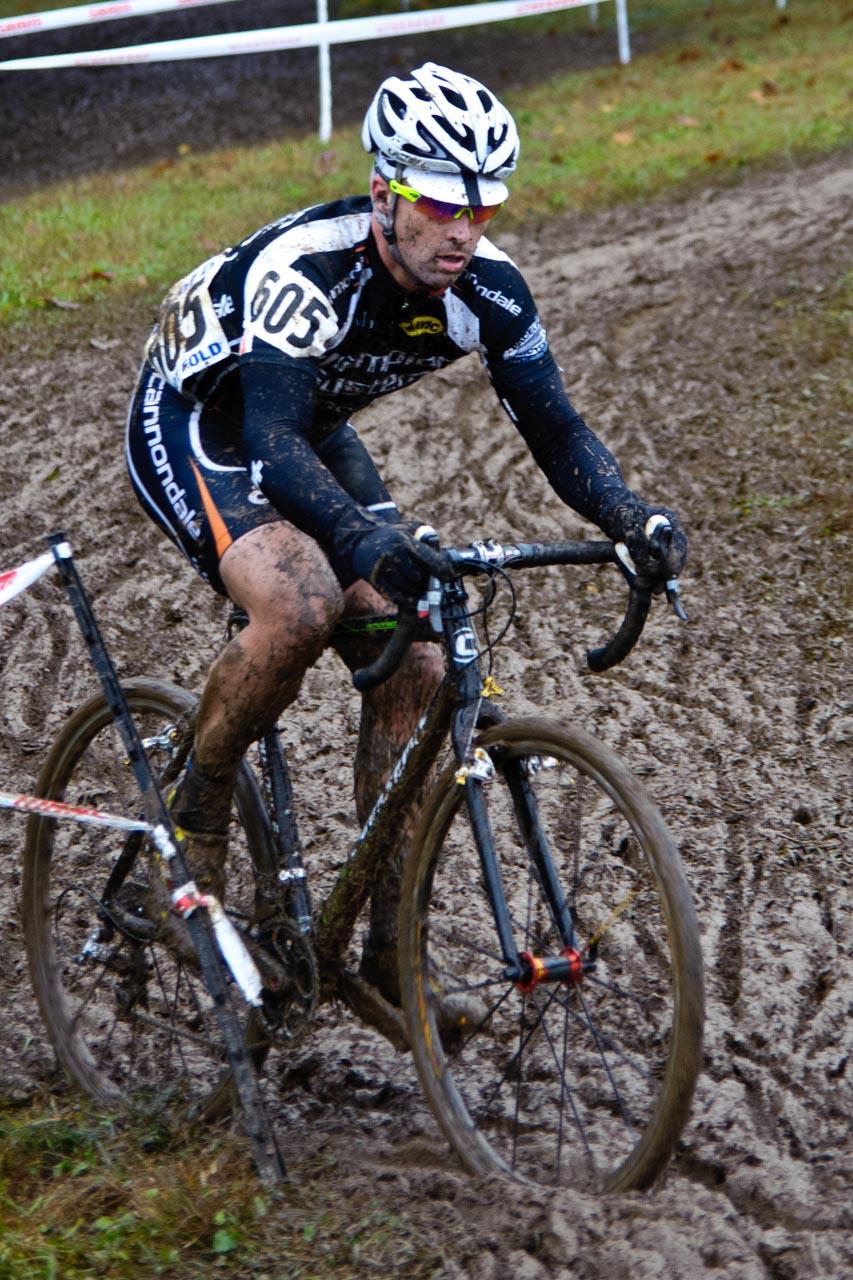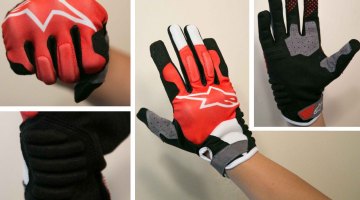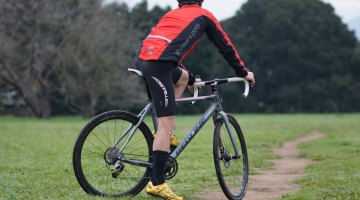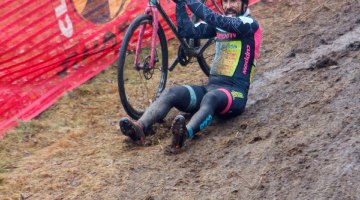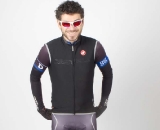by Chris Mayhew
Racing cyclocross presents many interesting challenges. One of the hardest to deal with is the weather, especially the cold and rainy variety. Many racers new to the sport struggle to properly prepare for nasty, bone-chilling conditions. I am here to tell you that having a positive experience in even the harshest conditions really isn’t that hard. Follow a few easy steps and you’ll stay dry and comfortable right up until the start of your race without sacrificing an adequate warm-up. This alone will give you a big advantage over the poor, shivering souls that did not take the time to read this article.
There’s a two-pronged approach to staying warm in inclement weather. First: dress for it. Granogue Cyclocross this past October took place on a day that featured 40-degree temperatures and a constant downpour. I raced in a long-sleeved skinsuit, Craft long-sleeve baselayer, wool hat, neoprene gloves, knee warmers, wool socks and a healthy layer of embrocation. If you haven’t used embro before, don’t start now. Try it in training first and bring rubbing alcohol and a towel to wipe it off later.
Hands, feet and core (usually in that order) are the limiters for racing in stuff like this. People typically drop out (or crash and then drop out) because they can’t feel one of the aforementioned. Keep them warm and wear more than you think you might require. One counterintuitive thing is wool socks. Get something thin but warm. Stuffing a thick sock into a narrow shoe can actually compress your foot and restrict blood flow. I’m a big fan of Swiftwick and Smartwool. Defeet socks seem too thick (their Woolie Boolie) or too thin.
The second, equally important tactic is to stay dry up until the start. Get to the course in time to get dressed in waterproof clothing and a set of clothes that you will not race in. Do your course recon and trainer warm-up in that clothing. If you have them, warm up in spare shoes and helmet. Get that stuff as wet (via sweat or rain) and muddy as you like. When you go back to the car for the final time to prep for your race, that’s the time to change into race clothing. Then put on a waterproof shell over all of that. You can toss the rain shell when you line up and arrive at the line reasonably warm and dry.
Get in the habit of warming up in one set of clothes and racing in another. I do it even if it’s 70 degrees and sunny, just so I don’t have to change my routine on a nasty day.
The same holds true for your pre-race routine. Try not to let the conditions dictate preparation. Keep it the same, rain or shine. That being said, some steps may take a bit longer on a nasty day because changing out of muddy clothes and doing it in foul conditions will add time. Make sure you work that into your schedule and arrive even earlier than normal when the weather turns bad.
My typical race day looks like this:
(1) Arrive 45 minutes before the first race of the day.
(2) Get your bike ready to ride, get into clothes and pre-ride the course for 30 minutes
(3) Get off the course, go to registration and get your number.
(4) Get some fluids, maybe eat, prep your pit bike (if you have one), and then go to the finish line and wait for the winner to come across.
(5) Scout course again (be aware of people still racing and do not pass them) checking for lines that have changed.
(6) Off course, back to car, change into race clothes, arrange for bike to go to the pit (or take it there yourself), go to the line to race.
Once you have finished racing get back to the car as soon as possible and undress. Bring a couple Hefty trash bags to stow your kit, shoes, helmet, gloves, socks, and anything else that is soaked and muddy. Make sure you remember to bring several towels and a bottle of clean water to use after the race. Baby wipes also work well. Once you have rid yourself of most of the mud and course detritus, change into some really warm clothes. Consider purchasing Wellies or other rubber boots that can handle muddy conditions. Your core temperature is going to be low at this point and you are at a heightened risk for hypothermia. Go find the coffee vendor (I guarantee you there is one) and get a large. Even if you don’t drink coffee use it to warm your hands. You may also need to spend a couple minutes in the car with the heater blasting.
When you’re warmed back up, put on your boots and maybe a rain-suit, grab your cowbell and go enjoy the rest of the day’s races.
Chris Mayhew is the associate coach for JBV Coaching. A Category 2 cyclocross racer, he’s made a lot of mistakes and learned from them so you don’t have to. When not staring at Crossresults.com he takes care of his son and two dogs who, truth be told, do most of the child rearing.














